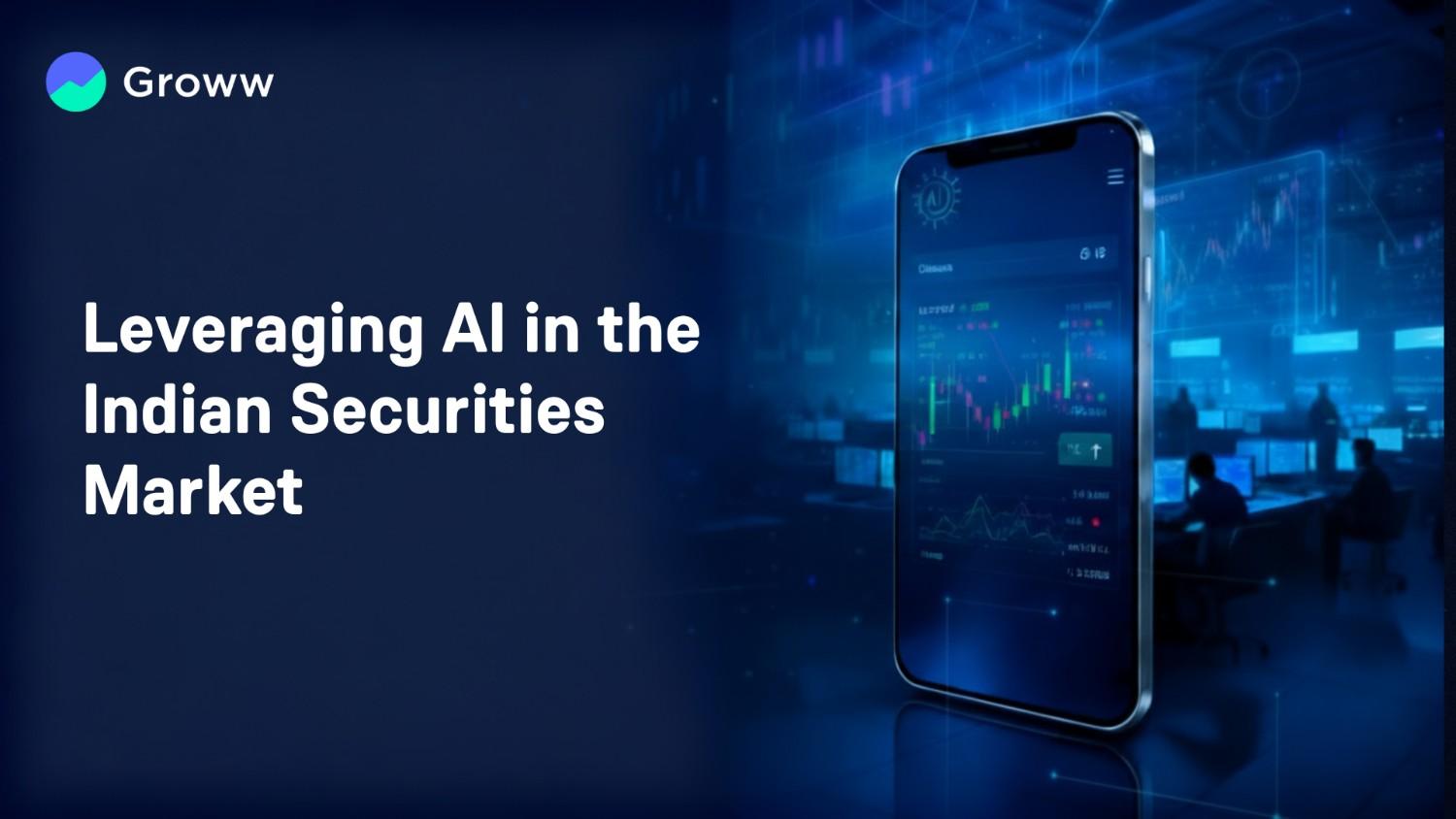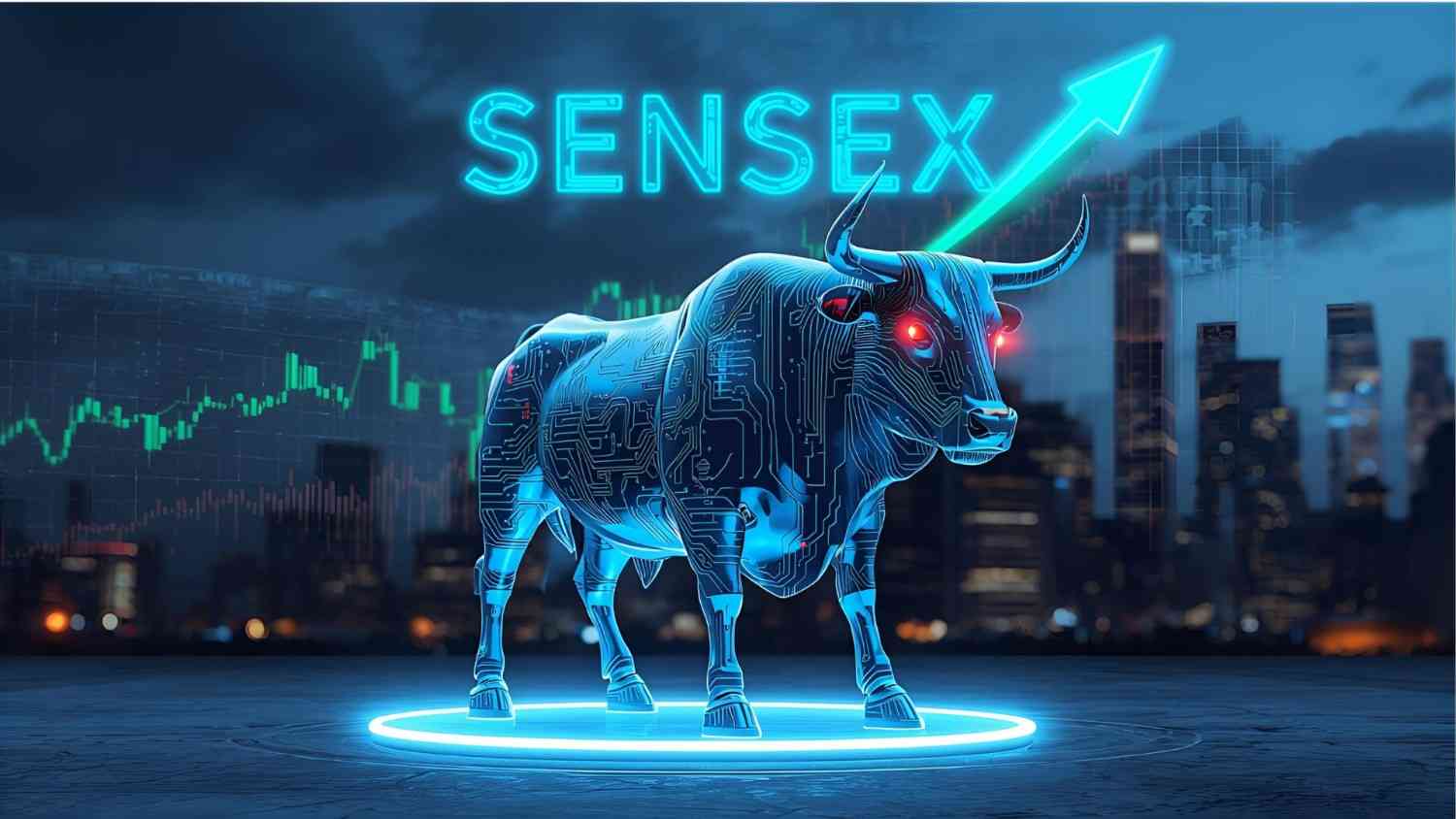How AI Is Quietly Transforming Indian Securities Markets - From Trading Floors to Your Investing App

From Trading Pits to Neural Nets: India’s AI Inflection Point
Not too long ago, placing a trade in India meant calling your broker or waiting for a screen refresh on a terminal. Today, an AI model predicts your next move before you click “Buy.”
That’s not science fiction - it’s how India’s Securities markets are evolving right now.
Over 19 crore demat accounts, and combined with digital public infrastructure like UPI, Account Aggregator, and India Stack, the stage is perfectly set for the next leap - AI-powered securities markets.
AI isn’t just another technology wave; it’s quietly transforming how every part of the market operates - from research desks and trading floors to compliance rooms and customer apps.
How the Buy Side Is Using AI to Stay Ahead
Asset managers and institutional investors have always lived and died by information speed. Now, they’re using AI to process mountains of it.
Take ICICI Prudential AMC, for instance - it uses machine learning to analyse fund flow data and forecast redemption spikes. This helps fund managers preempt liquidity risk during volatile periods. Having been closely involved in deploying similar predictive liquidity models, Have seen firsthand how even a 5–10% improvement in forecasting accuracy can change capital allocation decisions in real time.
At SBI Mutual Fund, NLP/Gen AI models parse analyst reports and earnings call transcripts in both English and Hindi, gauging sentiment shifts across sectors. When we experimented with comparable language models, the key challenge wasn’t building the model - it was fine-tuning it to pick up context across regional financial expressions, which made the insight generation process much more human-like.
It’s not just the big players. Mid-sized portfolio managers are experimenting with factor discovery models that look beyond price data - ingesting GST filings, FASTag toll data, and satellite imagery to detect early signs of economic activity.
AI, in other words, is doing what human analysts can’t: connecting unstructured dots across millions of signals.
On the Sell Side - Brokers and Fintechs Get Personal
Your investing app probably knows more about your habits than you realise - but it’s learning to use that data for your benefit. At 915, a trading terminal, AI models act as your personal financial expert - evaluating your portfolio, conducting deep analysis, testing strategies, and even backtesting them for you. Think of it as a strategist - a true expert right at your fingertips.
INDmoney uses AI to surface “INDsights” - portfolio summaries, alerts, and risk flags, all contextualised for each user’s holdings.
Zerodha’s Nudge feature takes it further - discouraging high-risk F&O trades when users exceed leverage thresholds. It’s AI-driven behavioural protection, built with SEBI’s investor safety intent in mind.
These innovations aren’t about replacing financial advisors - they’re digital copilots, scaling good behaviour across millions of investors.
Behind the Screens - Exchanges and Regulators Go AI-Native
While traders chase signals, regulators are using AI to chase trust.
The NSE’s surveillance systems, powered by machine learning, monitor billions of trades daily - flagging suspicious patterns like circular trading or spoofing within milliseconds. Having consulted on similar real-time anomaly detection architectures, I’ve experienced the balance between detection accuracy and false positives - every basis point of improvement strengthens market integrity.
SEBI’s AI Data Lake goes deeper, correlating filings, trades, and disclosures to detect insider activity and anomalies before human auditors can.
Even NSDL and CDSL have started using AI for KYC anomaly detection and corporate action matching, automating what used to take hours of manual validation. In practice, these systems rely on computer vision and NLP pipelines to match scanned KYC documents with structured database entries.
For example, an AI model compares PAN and Aadhaar images to detect subtle mismatches, while another flags anomalies in transaction histories that might indicate identity misuse. Over time, these models continuously learn from edge cases, improving both accuracy and compliance efficiency.
Think of it as India’s invisible market infrastructure - AI silently safeguarding fairness while humans focus on intent and enforcement.
Alternative Data: The New Alpha Frontier
Every trader has that one story - the hunch that worked. The gut instinct that told them a stock was ready to move. But what if that instinct could be trained, quantified, and scaled through data? That’s exactly where AI and alternative data step in.
For AI practitioners in capital markets, this means building systems that can connect seemingly unrelated dots. They build machine learning pipelines that ingest data from multiple ecosystems - transportation, payments, weather, search trends - and look for predictive correlations with market behaviour.
For instance, practitioners use satellite imagery and computer vision models to analyse truck movement and parking density at major logistics hubs, estimating sector momentum even before a company files its quarterly report. Others deploy sequence models to align FASTag transaction volumes with sector indices, training models to recognise early patterns in economic acceleration.
In another case, time-series models ingest GST filings and night-time electricity data to act as macroeconomic sensors. A surge in both signals can suggest manufacturing revival - often weeks before official data confirms it. It’s not magic; it’s math meeting market intuition.
Modern ML practitioners increasingly use these techniques not as black boxes but as augmentations of domain expertise. They build interpretable models that allow analysts to visualise feature importance, time lags, and anomaly triggers. Over time, the system learns what matters most - sector sentiment, supply chain noise, or consumer activity - refining its intelligence with every iteration.
It’s not about replacing traditional research but amplifying it. AI practitioners today empower analysts to see where data once looked like noise, turning data exhaust into predictive intelligence.

Voice, Vernacular, and the Democratisation of Investing
In a multilingual nation, AI is steadily dissolving the language barrier in finance, allowing every investor - from metros to tier-3 towns - to interact with technology in their own language.
Angel One and Paytm Money are among the early adopters experimenting with multilingual chatbots, allowing investors to simply say, “Mujhe SIP shuru karna hai,” and instantly receive mutual fund options in Hindi. What was once a complex transaction now feels like a conversation.
Having led early explorations in this space, I’ve seen that the challenge isn’t just building a voice model - it’s about making it intuitive and emotionally intelligent. Back when we tested multilingual portfolio queries, we realised accents were the easy part - emotion was the hard one. The AI must understand accents, emotions, cultural nuances, and even hesitation in a user’s tone. Investment platforms are now testing natural language portfolio queries, allowing users to ask, “Show me my top-performing funds this year,” and receive an AI-generated summary backed by analytics and insights. Several apps have already cracked multilingual text interactions, and voice is quickly following suit.
As speech models evolve, voice-driven investing in Indian languages is poised to do for capital markets what UPI did for payments - turning participation into a genuinely inclusive, frictionless experience.
As speech models improve, voice-driven investing in Indian languages will do for capital markets what UPI did for payments - make participation universal.
AI Meets ESG, Quantum, and Blockchain - The Next Frontier
AI isn’t stopping at recommendations and compliance - it’s moving into sustainability, security, and speed.
- ESG analytics
AI models now scan corporate disclosures and satellite images to assess emission patterns - helping investors choose truly sustainable companies. In practice, AI practitioners combine NLP and computer vision: NLP models parse sustainability reports and news sentiment to quantify ESG intent, while vision models detect real-world indicators like smoke plumes, deforestation, or solar farm expansion. Together, they create dynamic ESG scores that reflect not just stated policies but actual environmental behaviour. - Blockchain
NSE and depositories have piloted blockchain-based eVoting and settlement frameworks - AI can further enhance them by predicting settlement risks in real time. Practically, AI systems can analyse blockchain transaction patterns to detect inconsistencies, latency, or potential fraud in smart contracts. By applying anomaly detection algorithms to transaction data, AI helps ensure that settlements are accurate, tamper-proof, and executed efficiently. - Quantum computing
India’s National Quantum Mission could one day enable portfolio optimisation across thousands of assets in seconds, redefining risk modelling. Quantum algorithms have the potential to evaluate complex market scenarios exponentially faster than classical systems. In practice, AI practitioners could integrate quantum annealing and reinforcement learning methods to solve multi-variable optimisation problems like asset allocation, hedging, and derivatives pricing, producing risk-adjusted outcomes that are both faster and more precise.
These are early experiments - but they hint at a future where AI, data, and distributed tech converge to make markets faster, greener, and fairer.
AI in Compliance and Risk - The Invisible Guardian
AI isn’t just about growth; it’s about governance.
Machine learning models now validate position limits, margin risks, and trade disclosures automatically, reducing compliance turnaround from days to minutes.
Graph-based AI systems trace suspicious trade networks, helping regulators detect money laundering and insider patterns that humans often miss. These systems map every transaction as a node and relationship - buyer, seller, intermediary - and then apply centrality and clustering algorithms to expose hidden connections. For example, an AI graph engine might reveal a pattern of recurring trades between multiple shell accounts linked to a single entity, helping regulators spot coordinated manipulation or wash trading far faster than manual audits.
Having worked closely with compliance and risk teams on similar initiatives, I’ve found that the real challenge lies in balancing model transparency with operational complexity - ensuring teams trust AI recommendations as much as they trust audits.
As SEBI moves toward its Responsible AI Guidelines (2025), we’re entering an era of transparent, explainable AI in finance - where every decision can be audited and justified.

Why It Matters - From Markets to the Masses
For years, access and awareness were India’s biggest barriers to investing.
AI changes that equation.
It’s now possible to onboard a new investor through a voice chat in Bengali, give them a personalised SIP plan, monitor for behavioural risks, and ensure every transaction complies with SEBI norms - all without a single human in the loop.
What this really means is that financial literacy and access are no longer limited by geography or English fluency. A farmer in Bihar, a small business owner in Kochi, or a student in Bhopal can now access market insights and personalised financial advice in their native language through simple AI-powered interfaces.
At a systemic level, this inclusivity helps channel domestic savings into formal markets, deepening liquidity and improving economic resilience. AI ensures personalisation and protection at scale - reducing human bias, expanding reach, and promoting confidence in financial systems.
That’s not just automation. That’s financial inclusion at an algorithmic scale - and it’s transforming how India invests, saves, and grows.

The Next Bull Run Will Be AI-Led
The last decade’s bull run was powered by liquidity - a wave fueled by capital inflows, digital infrastructure, and retail participation.
The next bull run, however, will be powered by intelligence - by AI models and data-driven systems that uncover opportunities invisible to the human eye.
Across trading floors, investment platforms, and regulatory control rooms, AI is becoming the new market participant - one that learns, adapts, and acts with speed and precision. Portfolio strategies are now being backtested by reinforcement learning models; advisory bots understand user goals through conversation; and anomaly detectors ensure integrity in every transaction.
This silent intelligence layer is reshaping how markets function, making them more efficient, transparent, and inclusive.
Imagine a market where algorithms anticipate liquidity shifts, detect sentiment before it trends, and guide millions of investors in their own language. That’s not a distant future - it’s happening now. Each breakthrough in NLP, vision, Gen AI or graph AI adds a layer of predictability and personalisation to India’s financial ecosystem.
For the tech builders, regulators, and investors driving this transformation, the responsibility is clear: to shape an AI-powered market that amplifies trust, not speculation; inclusion, not inequality.
Because the next phase of India’s financial growth won’t just be measured in points on the Sensex - it will be measured in how intelligently and equitably we empower every investor.
AI isn’t just a tool anymore; it’s the new foundation of India’s capital markets - the quiet force behind the next bull run, and the future of intelligent investing.
As someone who’s been building these systems for a decade, I can say - the future of AI in finance isn’t just exciting. It’s already here, quietly compounding in the background.